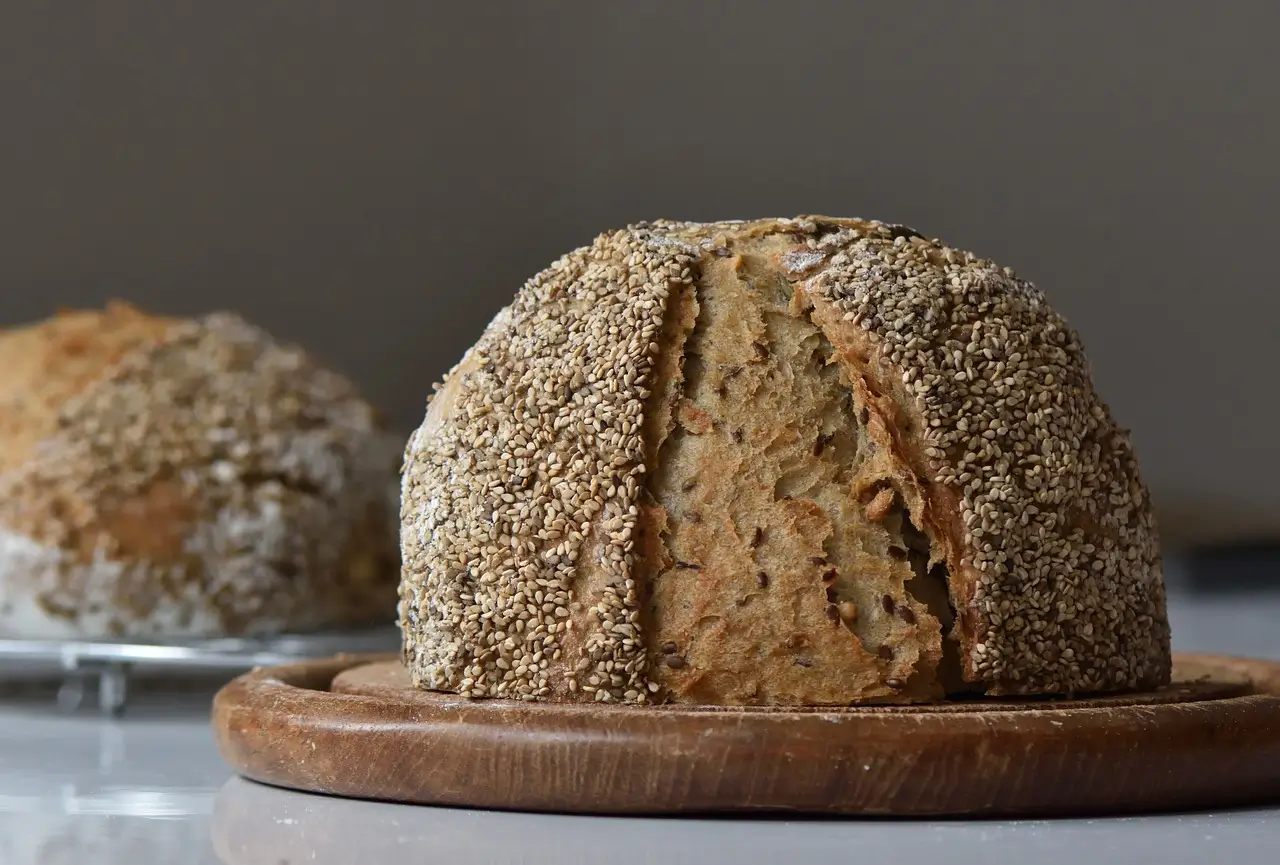Making perfect pumpkin seed bread at home might seem challenging for both experienced bakers and beginners. You only need 5 hours and 45 minutes to achieve bakery-quality results in your kitchen. This guide will help you create delicious sunflower seed bread as well, combining the best of both worlds.
Making seeded bread comes naturally once you understand the basics. The combination of pumpkin and sunflower seeds creates a delicious loaf packed with texture and flavor. Your bread will turn out perfectly when baked at 350°F and reaches an internal temperature of 205-210°F. The process of rising is crucial for achieving that perfect texture.
The process becomes simple when you follow our detailed steps from measuring ingredients to achieving that perfect golden crust. Let’s create something amazing together and start baking homemade bread!
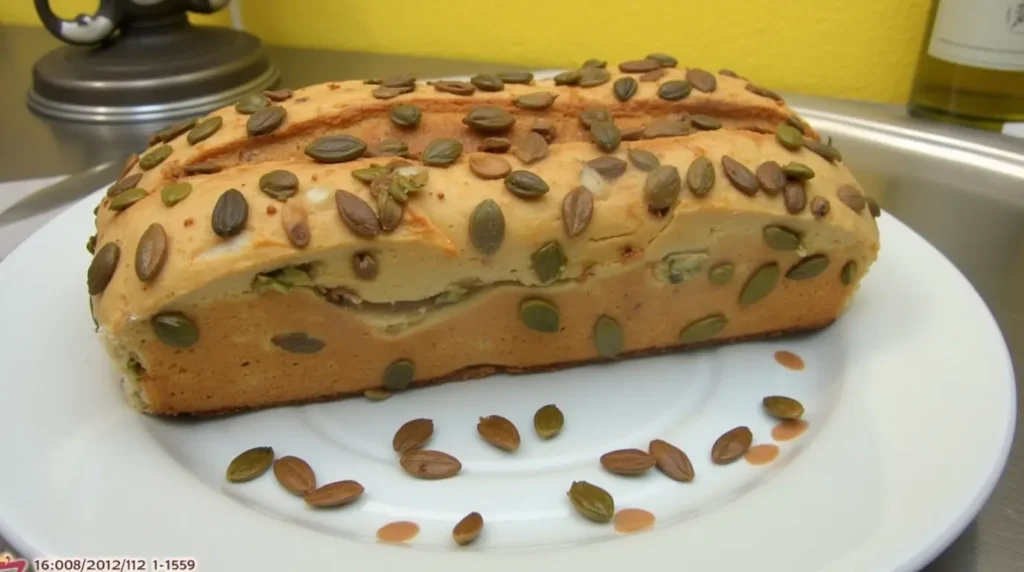
Table of Contents
Why Make Sunflower Pumpkin Seed Bread
Making your own sunflower pumpkin seed bread provides great nutrition and practical benefits.
Nutritional benefits
This seeded bread recipe is packed with nutrients. A single serving gives you 238% of your daily vitamin A intake and delivers minerals like magnesium, zinc, and iron. The mix of pumpkin and sunflower seeds creates a protein-rich loaf with 5.3 grams of protein per serving. These seeds also give you heart-healthy polyunsaturated fats, including omega-3 and omega-6 fatty acids. Additionally, this bread with pumpkin seeds is an excellent source of fiber.
Cost savings vs store-bought
You can save money by baking pumpkin seed bread at home. Artisanal seeded breads can cost up to USD 10.00 for a two-pound loaf. The homemade version costs between USD 1.45 to USD 3.20 for two loaves. Even with premium ingredients, making bread at home is cheaper than buying similar quality from stores.
Customization options
This versatile bread recipe lets you create many variations:
- Try different seeds like sesame or chia seeds
- Make it sweeter with honey or brown sugar
- Create gluten-free versions with alternative flours like buckwheat flour or quinoa flour
- Add whole grains to boost nutrition
- Experiment with sunflower seed flour recipes for a unique twist
Fresh-baked advantages
Baking bread at home lets you control every ingredient. You can skip preservatives and artificial additives that are common in store-bought versions. Fresh-baked bread tastes better and has better texture, especially when it’s warm. The process of kneading and shaping dough is a great way to relax. You can even try making sunflower keto bread for a low-carb option.
Basic Recipe Steps
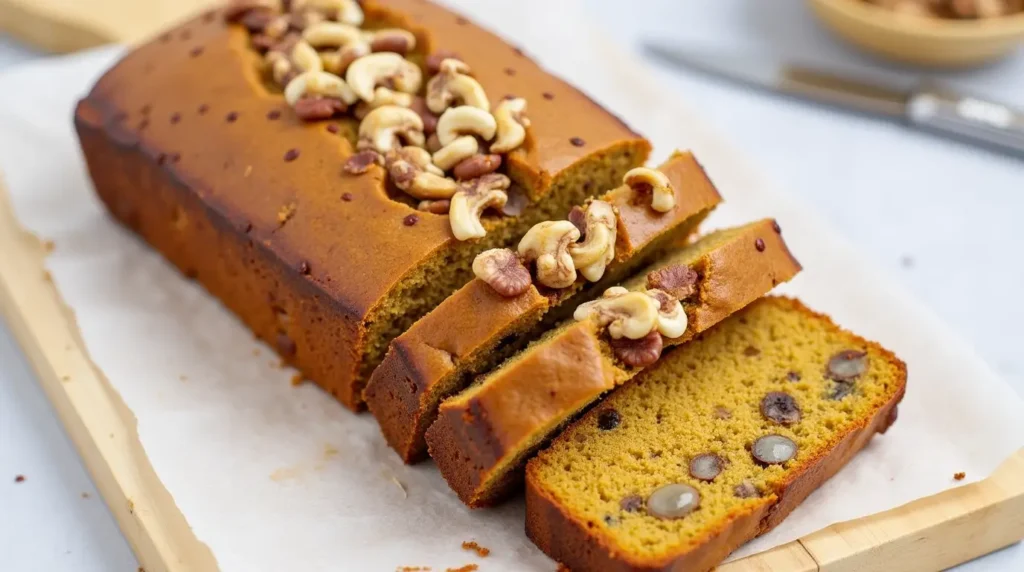
You need precise measurements and proper tools to create the perfect pumpkin seed bread recipe.
Measuring ingredients accurately
The right measuring equipment will give a consistent result. A digital kitchen scale gives the most accurate measurements. You’ll also need:
- Graduated measuring cups for dry ingredients
- Glass measuring cups for liquids
- Precise measuring spoons
- Mixing bowls
- Dough whisk or fork
Accurate flour measurement is the foundation of this pumpkin seed bread recipe. One cup of all-purpose or bread flour should weigh 120 grams. Use a spoon to transfer flour into the measuring cup instead of scooping directly from the container. A straight edge helps level off the top for precision.
The recipe needs specific measurements: 300g strong white bread flour, 1 teaspoon salt, 1 teaspoon fast-action dried yeast, and 60g pumpkin seeds. Measure 175ml warm water at eye level in a glass measuring cup. For a dairy-free option, you can use almond milk instead of regular milk.
Sticky ingredients like honey or nut butter need extra care. Coating the measuring cup with oil helps these ingredients release easily. The recipe works best with 50g of pumpkin puree for optimal moisture content.
Water temperature should stay between 100°F to 110°F (38°C to 43°C). This range activates the yeast and helps the dough rise properly. Note that even small changes in salt can affect your bread’s final taste and texture.
Creating Different Variations
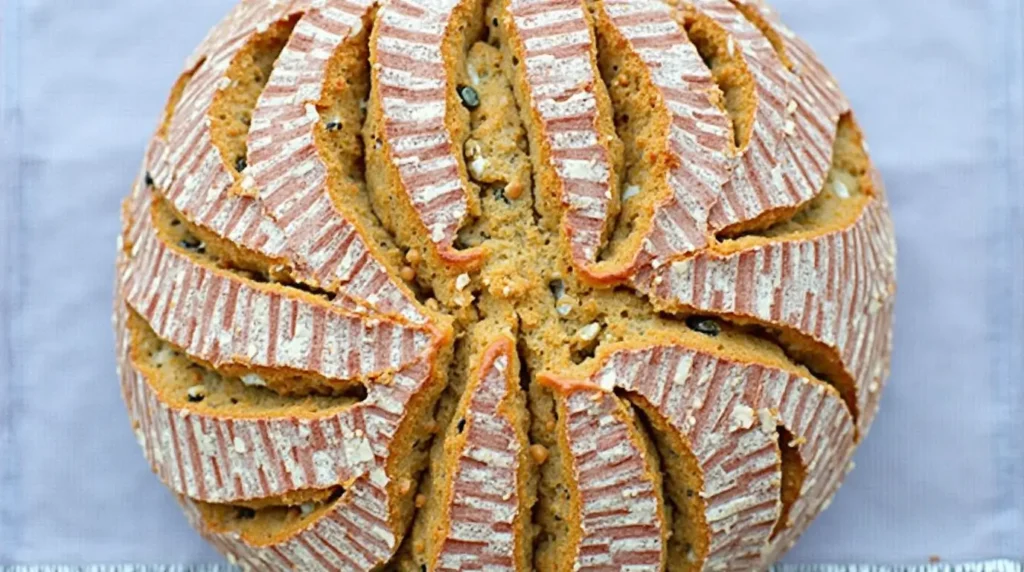
You can create unique flavors and textures by customizing your pumpkin seed bread recipe.
Adding extra seeds
We followed the 20% rule for a successful multi-seed variation – your total seed weight should equal one-fifth of your flour weight. Mix pumpkin and sunflower seeds equally, then add flax and sesame seeds in a 2:2:1:1 ratio to create a balanced seed blend. You can also experiment with adding chia seeds for extra nutrition.
Seeds taste better when toasted before adding them to your dough. Place them in a pan over low heat for 5-7 minutes and stir occasionally until they turn light brown. Let them cool completely before you mix them into your dough.
You’ll get the best results when you:
- Mix seeds during the final stage
- Save 2 tablespoons of seeds for topping
- Keep total seed mixture at 1/2 cup for balanced texture
Whole grain version
Your recipe becomes a nutrient-dense masterpiece with the whole grain variation. Start by switching regular flour with whole wheat flour. This change needs extra attention to moisture levels because whole wheat flour needs more water than white flour.
A perfectly balanced whole grain loaf needs 4-1/2 to 5 cups of whole wheat flour. Add 1 tablespoon each of honey and molasses to boost the flavor profile. These ingredients create rich, complex tastes and keep proper moisture levels. You can also try incorporating millet flakes for added texture.
Raw, unsalted seeds work best in this recipe. You might want to try different seed combinations. A quick pulse in the blender helps with nutrient absorption when using flax seeds, without affecting your bread’s texture. For a gluten-free option, you can experiment with nut and seed bread with psyllium husk, which helps bind the ingredients together.
Note that seeds on top might brown too quickly, so adjust your baking temperature. A loose foil cover over the loaf during final baking stages prevents burnt seeds and ensures thorough baking. Proper seed distribution is key to achieving an evenly textured loaf.
Storing and Serving Tips
Your pumpkin seed bread’s freshness and flavor depend on proper storage. The cooling process comes first.
Proper cooling method
The bread needs a wire cooling rack after baking. Take it out of the pan and give it 10 minutes to cool initially. The loaf must cool completely before storage to avoid moisture from trapped steam. Room temperature cooling takes about 2-3 hours.
Freezing guidelines
We wrapped the cooled bread in two layers of plastic wrap for the best freezer storage. You can also use one layer of plastic wrap with aluminum foil. Slicing the bread and adding parchment paper between pieces prevents sticking when freezing portions. This method keeps your bread fresh up to 3 months in the freezer.
Serving suggestions
In fact, this pumpkin seed bread works well with many dishes. Toasted slices taste better with butter and honey. The bread pairs perfectly with:
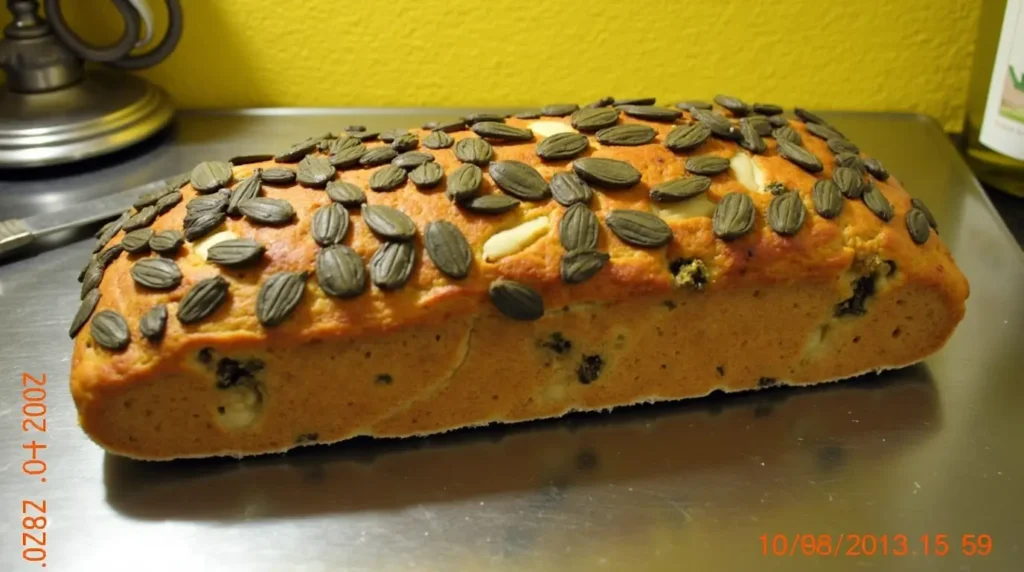
- Clam chowder or potato soup
- Chicken pasta dishes
- Fresh honey butter spread
- Morning breakfast accompaniments
Tightly wrapped bread lasts 2-3 days at room temperature. Frozen bread needs 3 hours to thaw whole loaves, while individual slices take 30 minutes. The bread’s fresh-baked taste returns after warming it in a 350°F oven with foil to prevent over-browning.
Conclusion
Making pumpkin seed bread at home is both rewarding and practical. Simple ingredients come together to create a nutritious, affordable loaf that matches anything from a bakery. Whether you’re making traditional sunflower seed bread or experimenting with keto-friendly options, the process is enjoyable and the results are delicious.
This homemade pumpkin seed bread delivers vitamin A, magnesium, and heart-healthy fats that save money compared to store-bought options. The recipe’s versatility lets you customize with different seed combinations and whole grain variations. You can even try making pumpkin bread with pumpkin seeds for an extra boost of flavor.
Your bread’s success relies on precise measurements and proper techniques. Following these detailed guidelines will give a perfect loaf every time. On top of that, proper storage keeps the bread fresh whether at room temperature or in the freezer.
This recipe gives you the ability to create wholesome, delicious bread in your kitchen. Note that fresh-baked bread adds warmth and comfort to any meal, which makes every minute spent baking worth the effort. Whether you’re using a bread machine or kneading by hand, the result is always satisfying.
FAQs
Q1. How do I make pumpkin seed bread at home? To make pumpkin seed bread, mix whole wheat flour, cinnamon, salt, and pumpkin seeds in a bowl. Sift in baking soda, then combine with beaten yogurt, sugar, oil, egg, and milk. Transfer the mixture to a prepared tin and bake at 375°F (190°C) for about an hour. For a gluten-free version, you can use alternative flours and add psyllium husks for better texture.
Q2. What’s the best way to get seeds to stick to bread dough? To achieve full seed coverage, shape your bread dough first. Then, dampen the surface by rolling it on a moist kitchen towel before transferring it to a tray covered with seeds. This method ensures the seeds adhere well to the dough’s surface. This technique works well for both pumpkin and sunflower seed bread.
Q3. Should pumpkin seeds be dried before adding them to bread? While it’s crucial to dry pumpkin seeds before roasting them as a snack, for bread-making, you can use them as is. However, toasting the seeds lightly before adding them to your dough can enhance their flavor in the bread. This applies to both pumpkin seeds (also known as pepitas) and sunflower seeds.
Q4. What are the nutritional benefits of pumpkin seed bread? Pumpkin seed bread is highly nutritious. It’s rich in vitamin A, magnesium, zinc, and iron. The seeds also provide heart-healthy polyunsaturated fats, including omega-3 and omega-6 fatty acids. Additionally, this bread offers a good amount of protein, with about 5.3 grams per serving. It’s also a good source of fiber, making it beneficial for digestive health.
Q5. How long can I store homemade pumpkin seed bread? At room temperature, properly wrapped pumpkin seed bread can be stored for 2-3 days. For longer storage, you can freeze the bread for up to 3 months. Wrap it in two layers of plastic wrap or one layer of plastic wrap plus aluminum foil before freezing to maintain freshness. This applies to both regular and gluten-free versions of the bread.

